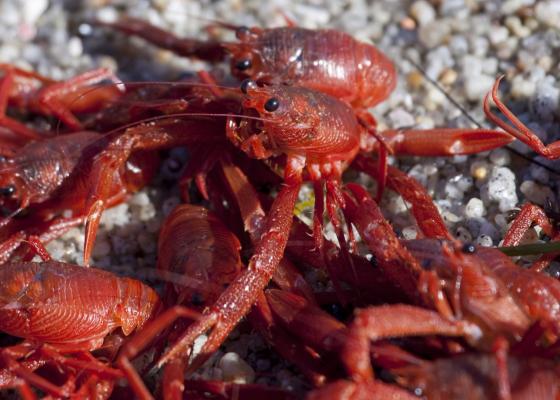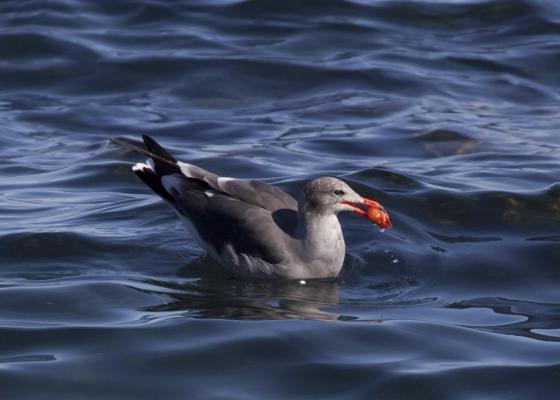Climate change is the variation in the Earth’s climate over time, and is a critically important issue for ocean and coastal management agencies. Globally and regionally the ocean is changing due to increasing carbon dioxide (CO2), which in turn changes multiple aspects of the marine environment. These changes influence sea level rise, sea surface temperature, ocean acidification, shifting weather patterns, coastal erosion, native species’ distributions, and the spread of exotic species. To respond appropriately, it is essential to understand how changes in the climate impact our sanctuary. Several consequences of climate change are reviewed below and in this PDF (MBNMS Climate Change Impacts Profile).
Physical Changes
Sea Level Rise
Melting of ice sheets and glaciers, combined with the thermal expansion of seawater as the ocean warms, is causing sea level to rise. California has experienced a rise in sea level of approximately seven inches (18 cm) over the past century (1900-2005), and this rise is expected to continue. Currently, the State of California is using a projection of up to approximately 15 inches (40 cm) by 2050 and up to approximately 55 inches (140 cm) by 2100. Sea level rise accelerates other physical processes such as coastal flooding, shoreline erosion, inundation of wetlands and estuaries, and saltwater intrusion into groundwater aquifers.
Sea Surface Temperatures
The oceans store about 90% of the Earth’s heat entering the atmosphere from the sun. This absorbed heat is released by the ocean over long periods of time; however, if ocean absorption outpaces release, sea surface temperature (SST) increases. Global oceans have increased SST by 0.10°C from 1961-2003. In shallow bays and estuaries and off the north-central California coastal shelf, SST has also increased. Interestingly, ocean temperatures over the continental shelf off central California have cooled over the last 30 years. This is likely due to an increase in coastal upwelling, which has been driven by altered wind patterns. Changes in SST also contribute to sea level rise and to changes in weather, the structure of the water column, and ocean circulation patterns.
Ocean Acidification
The chemistry of ocean water is changed by absorption of atmospheric carbon dioxide. As atmospheric carbon dioxide levels increase, ocean water becomes more acidic. Increasing acidity reduces the availability of chemical building blocks required by species growing skeletons and shells made from calcium carbonate. Affected species include plankton, crustaceans, urchins, mollusks, and deepwater corals such as those at Davidson Seamount. To watch Dr. Francisco Chavez of MBARI discuss OA, click on this video link.
Shifting Weather Patterns and Coastal Erosion
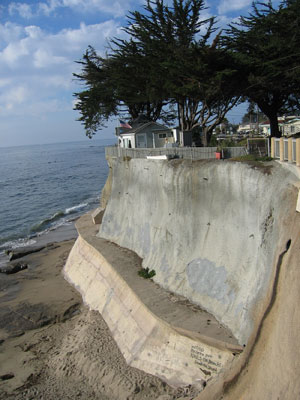
Climate change is predicted to cause more intense storms and larger waves. Fluctuations in natural climate cycles (e.g., El Niño and the Pacific Decadal Oscillation) may combine with anthropogenic climate change to create more extreme conditions than have previously been experienced. During El Niño years the occurrence of extreme wave heights and storms is likely to occur in late winter, a time when most beaches are at their narrowest width. Coastal erosion, flooding, runoff, and property loss will likely increase, and human responses (e.g., coastal armoring) will affect nearshore habitats. Larger waves may impact certain sensitive species, and may cause habitat-altering changes by affecting beach-sand movement, estuary mouth structure and coastal inundation.
Changes in Precipitation and Land Runoff
Climate change is expected to cause reduced Sierra snowpack due to warmer winter storms and lead to more extreme winter precipitation events in coastal mountains and watersheds. These changes, together with a projected trend toward increased annual variability in precipitation in the 21st century, will change the amount of water and other material delivered to the ocean by watersheds, lead to increased flooding and erosion, and alter the mixing of coastal ocean water layers and riverine plumes.
Biological Changes
Climate change will alter both environmental conditions and ecological processes, and in some cases these changes will exceed those previously experienced. Species may be metabolically or physiologically challenged and adapt in response, either through migration or by altering their behavior or life histories. The response of a single species to climate change will ripple through the entire community. Below are several types of expected biological changes.
Range Shifts
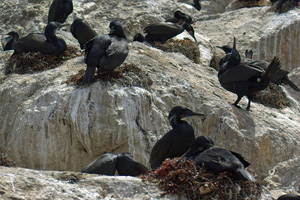
Organisms often respond to environmental changes by moving to new areas with tolerable conditions, thereby expanding or contracting their range in space. Along the West Coast, a general northward range expansion is expected since warmer ocean waters will create increased favorable conditions for more southern species. This process appears to already be underway, with gray whale calving, Humboldt squid, bottlenose dolphins, and volcano barnacles all occurring further north than in the past. A variety of range shifts are expected, with nearshore, continental shelf, and offshore organisms likely to respond differently due to varying local conditions.
Timing of Life History Events
Changes in the timing of ocean circulation processes such as upwelling could have major implications for marine life. Breeding of organisms from fishes to seabirds is often timed to coincide with peak food availability. If shifts in upwelling strength or timing occur due to climate change, species may be challenged by decreased ocean productivity and krill abundance at times when their food requirements are highest. Such conditions could result in reduced reproductive success and subsequent decreases in the size of breeding populations.
Impacts to Plankton Populations
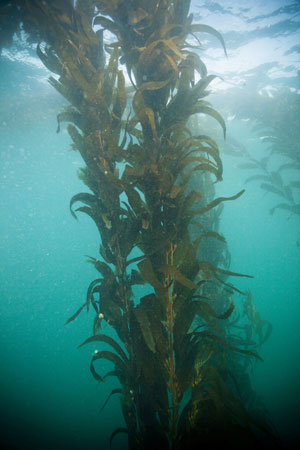
Plankton is the basis for key food web dynamics and predator-prey relationships, which drive regional populations of fishes and many other upper trophic level species. Plankton is also highly responsive to ocean climate variability and warming, and shifts in abundance or species composition can have widespread ecological impacts. Although additional long-term datasets are needed for central coast plankton abundance, several trends are becoming evident. The increase in upwelling winds over the past 30 years, which has led to cooler nearshore waters, is expected to shift phytoplankton densities from open coasts to waters further offshore. An increase in blooms of potentially harmful dinoflagellates – which thrive in areas with warmer surface temperatures – has also been observed in Monterey Bay.
Impacts to Macroalgae
Habitat-forming macroalgae such as giant kelp (Macrocystis pyrifera) are also likely to be impacted by climate change. These types of algae are often tolerant of only a narrow range of temperatures, and could be diminished by warmer waters. Additionally, changes in upwelling may alter the supply of nutrients needed by macroalgae, and the increased intensity of storm-generated waves may cause greater detachment of kelp and deposition on shore. Increased kelp loss will negatively impact the organisms that rely on intact kelp forests for food, habitat, and camouflage.
Impacts to Fishes, Seabirds, and Marine Mammals
Fishes, seabirds, and marine mammals may be negatively affected by changes to the food web as a result of changing ocean temperatures, shifts in upwelling, and ocean acidification. Differences in water temperature are expected to directly influence the physiology of cold-blooded fishes, which may lead to range shifts to more suitable areas. The migrations, behavior, abundance, breeding, and reproductive success of seabirds and marine mammals could all be affected by increased air and sea temperatures, extreme weather, and sea level rise.
